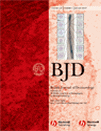Centro Studi GISED
Use of excimer laser in vitiligo
What we do
Vitiligo is a disease characterized by the disappearance of melanocytes in circumscribed skin areas with consequent loss of skin pigmentation. It is the cause of psychological and social disability especially among young people and has an impact on the quality of life interfering with the psychological, physical wellbeing and with social relations.
Considering how chronic and disabling vitiligo can be, it is important to obtain reliable estimates of the efficacy and safety of the treatment proposed.
Centro Studi GISED has recently concluded a controlled clinical trial on the effectiveness of a combined use of 308-nm excimer laser and hydrocortisone 17-butyrate in the treatment of face and /or neck vitiligo lesions.
In total, 84 patients (44 women and 40 men, mean age 44 years), with vitiligo localized on the face or neck were randomized to receive either 308-nm excimer laser or excimer laser plus hydrocortisone 17-butyrate cream for 12 weeks.
The primary outcome was a reduction of at least 75% of the overall lesional areas, assessed by computerized imagine analysis. Secondary outcomes were improvements in PGA (Physician's Global Assessment), and SKINDEX-29 scores.
The Table below summarizes the study results.
| Repigmentation percentage |
Laser therapy | Combined therapy: laser + idrocortisone 17-butirrato |
Total |
| Intention-to-treat | |||
| <75% | 35 | 24 | 59 |
| >=75% | 7 | 18 | 25 |
| Per-protocol | |||
| <75% | 29 | 22 | 51 |
| >=75% | 7 | 18 | 25 |
The results, recently pubblished by British Journal of Dermatology, indicate that the excimer laser phototherapy at 308 nm combined with hydrocortisone 17-butyrate cream provides better repigmentation rates than excimer laser alone (1).
This trial has been registered under Cochrane Skin Group, Ongoing Skin Trial Register in March 2007, registration number CSG47.

